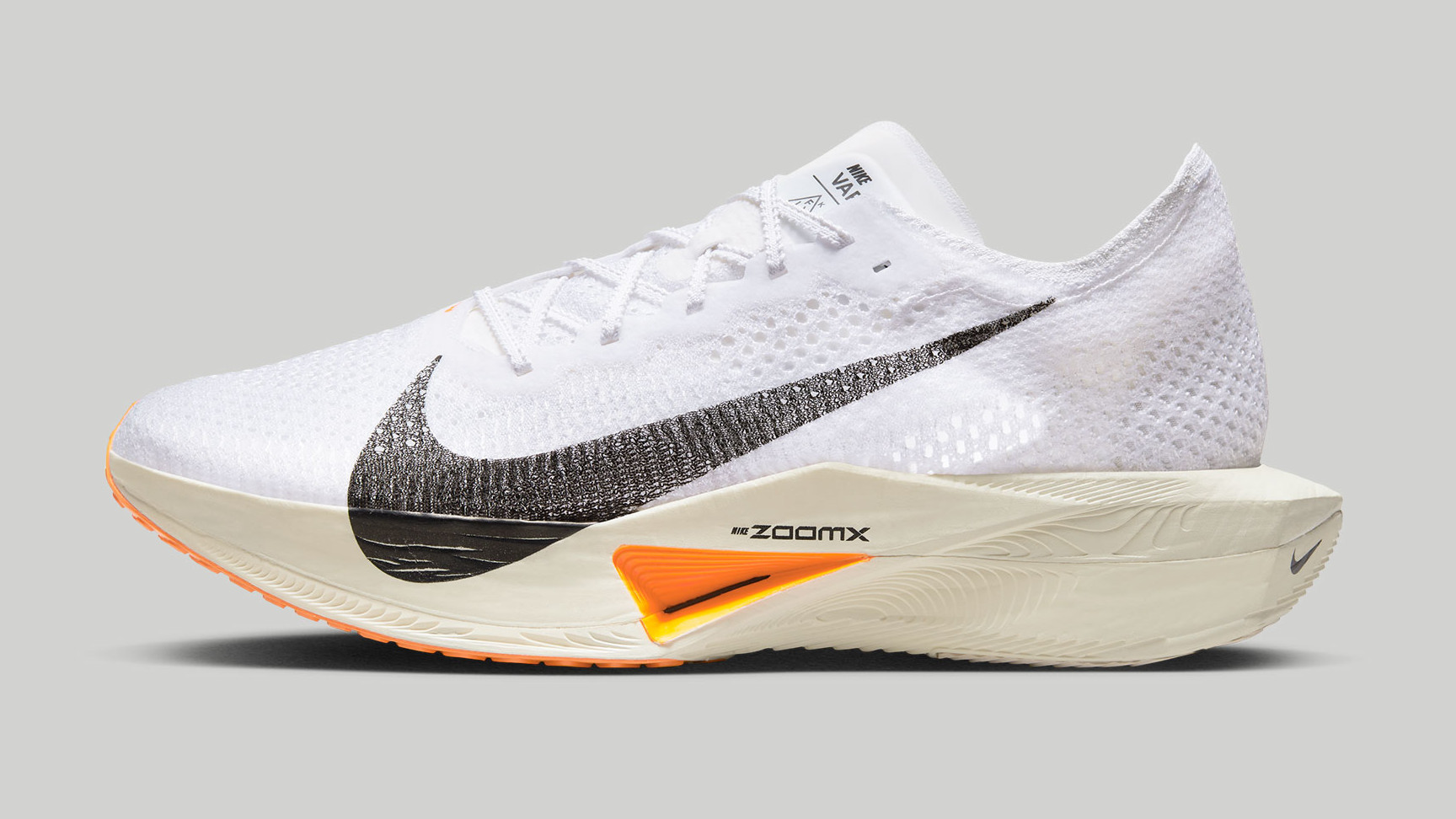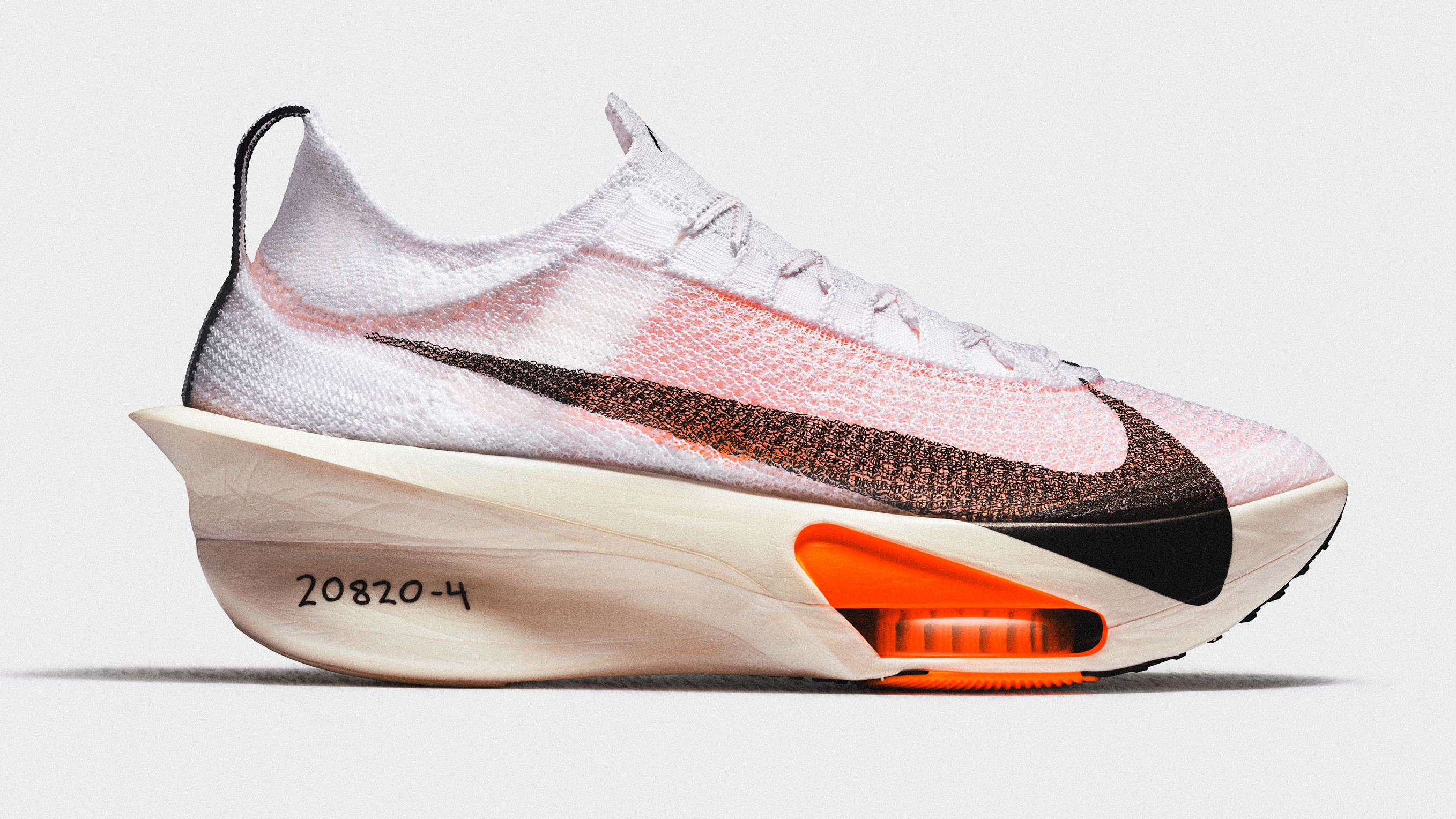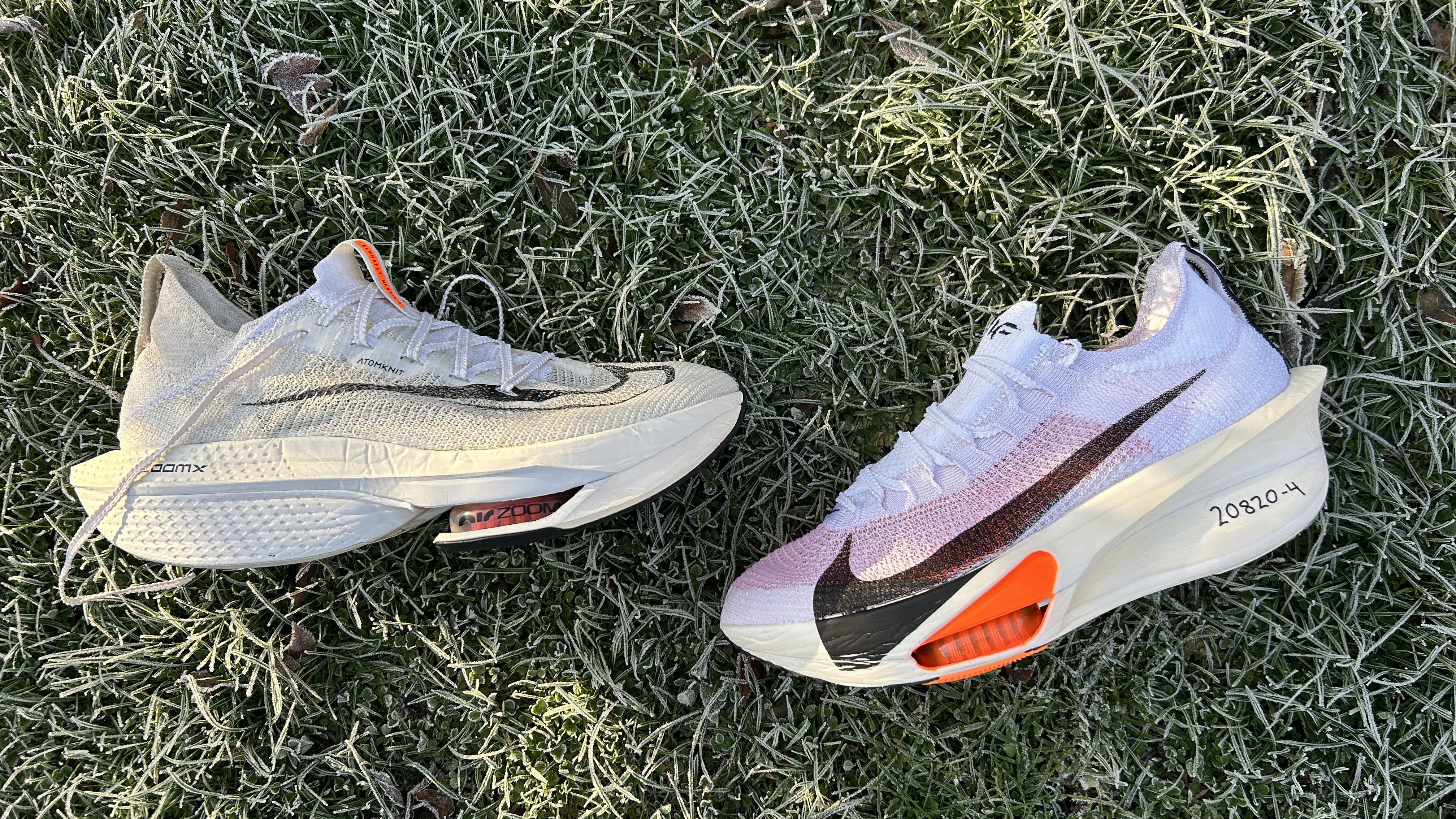Nike Vaporfly 3 Vs Nike Alphafly 3: Which Nike Racing Shoe Should You Get?
I’ve raced and trained in every generation of the Nike Alphafly and Nike Vaporfly, so which is better?

The Vaporfly 3 is lighter, nimbler and cheaper than the Alphafly 3, and it's an outstanding option for races at any distance. It’s not the most durable shoe, however, and less stable than the Alphafly 3.
For
- Lighter than Alphafly 3
- Less expensive
- Still very propulsive
Against
- Outsole is not durable
- Narrower and less stable
- Less propulsive than the Alphafly 3

The latest version of the Alphafly 3 is almost as light as the Vaporfly 3 and the Air Zoom pods under the forefoot add even more bounce. It’s one of the most expensive shoes available, though, and the Vaporfly 3 matches its performance for shorter events.
For
- Propulsive, efficient ride
- Lightest Alphafly yet
- More durable outsole than Vaporfly
Against
- Expensive
- Heavier than Vaporfly 3
The original Nike Vaporfly was the shoe that kick-started the carbon plate running shoe revolution and the latest version, the Vaporfly 3, remains one of the best available. However, I rate Nike’s newest racing shoe, the Alphafly 3, more highly than the Vaporfly 3.
It’s a close call, and there’s certainly a case for buying the Vaporfly 3 instead, especially if you concentrate on shorter races. I’ve raced and logged a lot of miles in both the Alphafly 3 and Vaporfly 3, as well as the previous generations of the shoes. Here are the key differences to consider.
Nike Vaporfly 3 Vs Nike Alphafly 3: Price And Availability
The Nike Vaporfly 3 launched in February 2023 and costs $250 in the US and £235 in the UK, with some versions like the Eluid Kipchoge colorway being slightly more expensive. The Nike Alphafly 3 launched in January 2024 and costs $285/£285. As the older shoe of the pair, the Vaporfly 3 is more likely to pop up in sales and was widely reduced in the UK on Black Friday 2023.
How I Tested These Running Shoes

I have run more than 100 miles in the Nike Vaporfly 3 and around 50 miles in the Nike Alphafly 3. I have raced twice in both shoes, including running 2hr 33min at the London Marathon 2023 in the Vaporfly, as well as doing several hard training sessions in both. I have also tested every generation of both shoes, running my current marathon PR of 2hr 28min in the Vaporfly 2, as well as sub 2hr 30min marathons in the Alphafly 1 and 2.
Design And FIt
There are more similarities than differences in the overall designs of the two shoes. Both use Nike’s lightweight and springy Peba-based ZoomX foam in the midsole, and both have a full-length carbon fiber plate running through that foam to help create a more efficient and propulsive ride.
Both shoes also have a stack height of 40mm at the heel and a drop of 8mm. The shoes are close in weight too: The Vaporfly 3 is 7.3oz/206g in my UK size 9, while the Alphafly 3 is 7.7oz/220g.
The main difference between the shoes is the addition of the Air Zoom pods under the forefoot of the Nike Alphafly. These pods are firmer than the ZoomX foam, and according to Nike they deliver more energy return than the foam alone.
The Alphafly is also a slightly wider shoe and its plate is wider on the inside of the foot to create more stability than you get with the Vaporfly, though neither is a particularly stable shoe given the high stack of soft foam underfoot.
In the past, the Alphafly had a large cut-out in the center of the midsole which divided the foam at the front and back of the shoe, but the Alphafly 3 now has a continuous midsole, which creates a smoother ride and a more similar feel to the Vaporfly 3.

Both uppers are lightweight and breathable. The Alphafly 3 uses Nike’s AtomKnit 3.0 material and has a bootie-style fit, whereas the Vaporfly 3 has a Flyknit mesh upper and a more traditional tongue design.
I found that both shoes fit me well in my normal running shoe size, but I prefer the heel design of the Alphafly 3, which creates a comfortable and secure fit. With the Vaporfly 3 the thin band of padding at the back would sometimes irritate my Achilles or cause heel rub, and I had to heel-lock the shoe to reduce this.
Both shoes have fairly minimal rubber coverage on the outsole to keep the weight down, but while the Alphafly 3’s rubber seems quite hard-wearing, the Vaporfly 3 outsole started to show wear and tear after only 30 miles, especially at the heel.
This wear hasn’t been too bad for me and I’ve not noticed any drop in performance after 100 miles, but other runners I know have completely ripped off the rubber at the heel of the shoe, so the Alphafly 3 appears to have the edge on durability.
Running Performance
I consider the Vaporfly 3 and Alphalfy 3 the two best racing shoes on the market (though I’ve not tested the wildly expensive Adidas Pro Evo 1 yet) and they share some characteristics. Both tip you forward onto your toes and help to propel you on your way, and they have the comfort for long events while also being lightweight and fast enough for short ones.
I’ve run wearing both shoes at the same time and also tested them during a workout where I did one set of reps in the Vaporfly 3 and another in the Alphafly 3, and the Air Zoom pods were the main difference I noticed between the two. The Alphafly 3 has a firmer feel in the forefoot and the pods add a little more spring to your toe-off.
The Alphafly 3 also feels more stable for cruising along at your race pace, but the narrower Vaporfly 3 does feel lighter and more agile when you’re accelerating or rounding tight corners.
When I was tiring in races I found that the Vaporfly 3’s lightness means it’s easier to keep turning your legs over in the shoe—in fact it feels similar underfoot to when you’re fresher. The Alphafly 3 felt at its best for me when I was running with control early on in races, and it helps you to hold on to a pace as you tire, but it’s not quite as easy to get the same booming bounce from the shoe when you’re fatigued.
Verdict
For me, the Nike Alphafly 3 is the better overall racing shoe. That's especially true if you are planning to run a marathon, where the extra propulsion you get from the shoe and the way it helps you hold onto your race pace even as you tire make it the best bet for PR seekers.
However, the Vaporfly 3 is an equally excellent option for shorter races, and still a very, very good marathon shoe. It’s cheaper too, especially since it now crops up in sales fairly frequently, and if you already have the Vaporfly 3 I don’t think you should feel compelled to rush out and buy the Alphafly 3.
Get the Coach Newsletter
Sign up for workout ideas, training advice, reviews of the latest gear and more.

Nick Harris-Fry is a journalist who has been covering health and fitness since 2015. Nick is an avid runner, covering 70-110km a week, which gives him ample opportunity to test a wide range of running shoes and running gear. He is also the chief tester for fitness trackers and running watches, treadmills and exercise bikes, and workout headphones.
